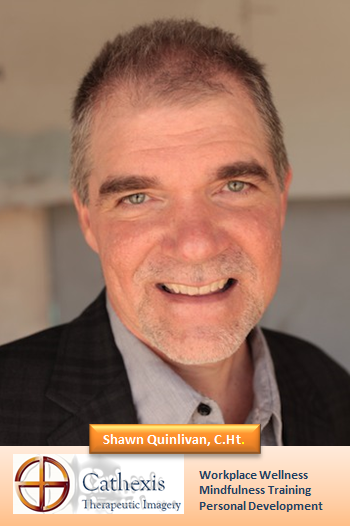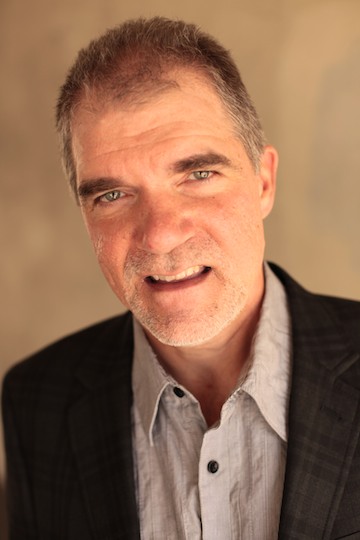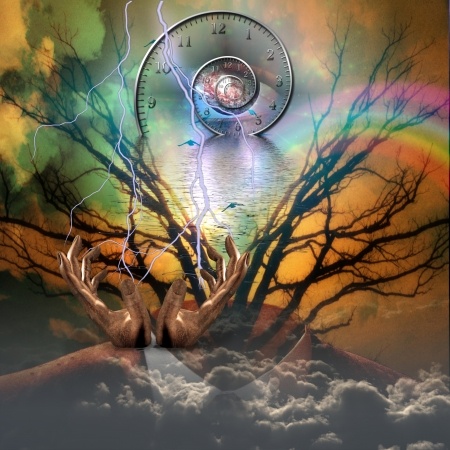
Dreams Are A Portal To The Mystical Realms Of The Subconscious
- Have you ever consulted a dream dictionary to try and understand puzzling symbols that have appeared in your dreams?
- Do you have nightmares or wake up with dream memories that stay with you through the day?
- Have you ever had an out of body experience during a dream?
- Are you familiar with lucid dreaming and have you experienced it?
- Does the idea of dream analysis appeal to you as a way to find out more about yourself?
Dream Therapy
Dream therapy can help you realize and fulfill goals, improve your performance and problem solving ability (see NY Times article here), discover and understand your deeper self, and increase your focus and energy. Positive side effects often occur as a result of the process, including development of better sleeping habits, experiencing deep and restful sleep on a consistent basis, and gaining a new respect for the important role sleep and dreaming play in mental, physical, and emotional health. Exploring dream therapy has helped clients with insomnia move beyond the common fixation on falling asleep, and has also proven beneficial with weight loss and addiction clients who decide to improve dietary habits—mostly related to sugar intake—in order to sleep better, recall their nightly dreams, and begin to decipher them.
Many clues to the psychological reasoning of the mind can be uncovered in the symbols of dreams. Some dreams are tied to daily stresses, pressures, and challenges, while others are archetypal in nature and may represent fears, apprehensions, grief, or unresolved traumas from the past that are being triggered by current life events. Extensive scientific research has shown that everyone dreams for about 100 minutes each night (see the article Brain Basics: Understanding Sleep here), including several separate dreams during the normal rapid eye movement (REM) dream cycles. People who say they do not dream simply do not remember their dreams. Nonetheless, almost everyone can be conditioned to sleep in a manner conducive to vivid dreaming and recall, and to record their dreams for interpretation and analysis.
Lucid Dreaming
 A lucid dream is any dream in which you have conscious awareness. Lucid dreaming is characterized by elements of both waking and dreaming and has attracted the attention of scientists with an interest in further specifying the brain basis of consciousness (see Harvard Medical School article The Neurobiology of Consciousness: Lucid Dreaming Wakes Up here). Lucid dreams can happen when you have just begun to fall asleep, during deep sleep when physiological factors such as pain or illness are present, and in the early morning hours when you are about to awaken. Yet lucid dreams commonly occur at other times as well, such as in guided imagery, while under hypnosis and during meditation, or when taking a nap.
A lucid dream is any dream in which you have conscious awareness. Lucid dreaming is characterized by elements of both waking and dreaming and has attracted the attention of scientists with an interest in further specifying the brain basis of consciousness (see Harvard Medical School article The Neurobiology of Consciousness: Lucid Dreaming Wakes Up here). Lucid dreams can happen when you have just begun to fall asleep, during deep sleep when physiological factors such as pain or illness are present, and in the early morning hours when you are about to awaken. Yet lucid dreams commonly occur at other times as well, such as in guided imagery, while under hypnosis and during meditation, or when taking a nap.
Another way lucid dreaming takes place is through dream therapy and the process of remembering your dreams. As you train yourself to recall dreams and think about what they mean, you may begin visiting those recollections at times throughout the day and find yourself re-entering certain dreams in a detached sort of way, as if you are on a threshold between two points of consciousness. Studies and research conducted on lucid dreaming (see Wake Up World article here) show that like meditation and self-hypnosis, it is a manifestation of consciousness you can condition yourself to become more adept at, with the only limitations being your self-discipline and imagination.
Astral Projection
Implicit in the discussion of lucid dreaming is the out of body experience, also known as astral projection, which is consciousness outside of the physical body. There are many definitions and philosophical arguments about this controversial subject that has ancient roots in common world religions and is associated with near death experiences, sleeping and dreaming, illness, surgical procedures, psychoactive drugs, and hypnosis and meditation. While it defies the limits of conventional testing and thus invites skepticism, science nonetheless acknowledges the phenomena (see the article Understanding The Out-Of-Body Experience from a Neuroscientific Perspective here). Perception beyond the physical plane is supported by the quantum physics theory of a unified energy field of consciousness, otherwise known as the quantum hologram, as well as by holistic and spiritual healers, teachers, practitioners, and by many who have had out of body experiences. As it relates to sleep and dreaming, perhaps the most familiar out of body experience is the sensation of having to “get back to your body” and wake yourself from a dream.
The Secrets To Dream Interpretation

An archetype is like an old watercourse along which the water of life has flowed for centuries, digging a deep channel for itself. ~Carl Jung
Sigmund Freud and Carl Jung both used dream analysis with patients and wrote extensively on the subject. Freud, whose name is synonymous with the term psychoanalysis, proposed that dreams were primarily tied to the fulfillment of wishes. Considered a seminal figure in the history of psychology, Jung is widely believed to have advanced many of the ideas Freud introduced. Among Jung’s contributions were the concepts of genetic memory and the collective unconscious, which stemmed in part from the significance he placed on the familiar archetypes that appeared in the dreams of his patients; his belief was that dreams were deeply anchored in the psyche and expressed more than repressed wishes (see About.Com article on Freud and Jung here).
Dr. John Kappas, Ph.D., who founded the Hypnosis Motivation Institute (see HMI link here), was a modern day pioneer in dream analysis and developed a model of dream therapy currently used by many psychologists and hypnotherapists. This approach incorporates aspects of both Freud’s and Jung’s work, yet distinguishes itself in its separation of dream stages and individualized interpretations of the unique dreamscape of each client.
The Kapassinian model of dream therapy contemplates three distinct periods in which we dream each night. These can be described as follows:
- The Wishful Thinking Stage: The initial dreaming period where the mind sorts and prioritizes the stimuli of the day based on emotional attachment.
- The Precognitive Stage: The second dreaming period occurs during the middle of the night when the primal, instinctive part of the mind sorts both the familiar and unfamiliar aspects of current life challenges, which are filtered by the deeper attitudes and beliefs of our life script. In this stage, we try to predict outcomes as a means of survival.
- The Venting Stage: The final period of dreaming is in the early morning hours when we release emotional charges attached to relationships, events, and transactions to which we are no longer invested. These dreams are the easiest to remember, the most hallucinogenic in nature, and can infuse unlikely mixes of people, places, and times with uninhibited and sometimes bizarre or objectionable circumstances.
In order for a proper analysis to take place, the dreams must be written down, no matter how disjointed or fragmented the memories of them may seem, with a notation of the time each dream occurred; it is best to do this immediately upon waking. After practicing this journaling exercise for awhile, the ability to remember your dreams will improve and you will only need to jot a few things down in order to accurately reconstruct them during therapy. Then you and your therapist work together to analyze your dreams based on what stages they occurred in, what symbols, emotions, and physiological factors were present, and how they may relate to the circumstances in your life.
Symbols Of The Dream World
Conveying more than obvious or immediate meanings and representing broader expressions, symbols elude absolute definition because they have different connotations to different cultures and peoples. As the mind contemplates a symbolic image, it is compelled to consider ideas beyond the immediate grasp of reason or conviction. Many symbols are collective in nature, having originated from religious beliefs and customs—believers contend they are divine revelations, while skeptics argue they have been invented. Examples of such symbolic images are the wheel and the cross, both of which are known around the world yet have different significance under various conditions and renderings.
A symbol may occur in a dream because an event has taken place in our life that we are subconsciously aware of but are not yet willing to acknowledge; hence, the awareness manifests symbolically in the dream state. Symbols may also recur in dreams, or the dreams themselves may recur, sometimes in slightly varying episodes. Recurring dreams and dream symbols that invoke a similar emotional response can be rooted in a past anguish or forgotten trauma, or represent an attempt by the dreamer to compensate for some perceived defect in character or attitude.
 Yet expressions of repressed emotions, memories, traumas, challenges of character, or events we are not ready to consciously acknowledge, are not the only basis for dream symbols. Indeed, certain elements of dreams can occur which are not necessarily particular to, nor derived from, the personality or individual experience of the dreamer. Freud first observed such elements and called them “archaic remnants.” Carl Jung referred to them as “primordial images” or “archetypes,” and described them as:
Yet expressions of repressed emotions, memories, traumas, challenges of character, or events we are not ready to consciously acknowledge, are not the only basis for dream symbols. Indeed, certain elements of dreams can occur which are not necessarily particular to, nor derived from, the personality or individual experience of the dreamer. Freud first observed such elements and called them “archaic remnants.” Carl Jung referred to them as “primordial images” or “archetypes,” and described them as:
” . . . mental forms whose presence cannot be explained by anything in the individual’s own life and which seem to be aboriginal, innate, and inherited shapes of the human mind.”
Jung connected archetypes across cultural boundaries and conceptualized them as fundamental, instinctual forces that somehow exist beyond our comprehension. Perhaps this is why dreams have served as a portal to other realms for shaman, holy men, spirit walkers, prophets, and medicine men from indigenous cultures throughout time, reminding us of the importance of this mystical otherworld of consciousness.
©2013 Shawn Quinlivan, C.Ht. & Cathexis Therapeutic Imagery
 Cathexis Therapeutic Imagery specializes in innovative approaches to workplace wellness, mindfulness training, and personal development. Via private coaching, presentations, workshops, training events, and our partnership in the unique online wellness community Your Wellness Room—used by Kaiser Permanente, EFactor and other notable companies—our nationally recognized programs and practices help people and organizations make positive changes. Please call for a free consultation at (818) 512-4371 or contact us via email.
Cathexis Therapeutic Imagery specializes in innovative approaches to workplace wellness, mindfulness training, and personal development. Via private coaching, presentations, workshops, training events, and our partnership in the unique online wellness community Your Wellness Room—used by Kaiser Permanente, EFactor and other notable companies—our nationally recognized programs and practices help people and organizations make positive changes. Please call for a free consultation at (818) 512-4371 or contact us via email.




















